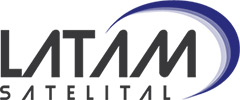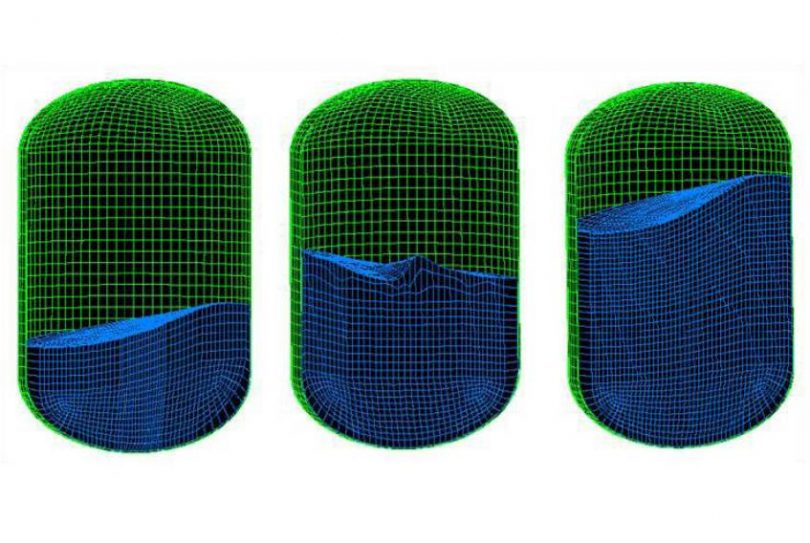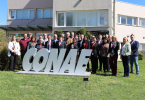One of the outstanding applications of the computational modeling to the space activity explained by Eduardo Dvorkin and Marcela Goldschmit of Sim & Tec
Español | English
By Eduardo Dvorkin and Marcela Goldschmit
The phenomenon known as sloshing consists in the movement of a liquid inside a vessel containing it when excited by external forces. When the liquid is stirred inside the vessel, forces are induced on it and on the structure that supports it. Typical cases, in which the sloshing phenomenon must be carefully considered, are:
- Liquid fuel tanks of satellite launchers: where forces due to sloshing can uncontrollably modify the planned route.
- Tanks containing liquids, transported by trucks or ships: where forces due to sloshing can cause structural damage or loss of balance of transport vehicles.
- Storage tanks for liquids in seismic zones: where forces due to sloshing can cause loss of tank balance.
It is necessary, therefore, to be able to predict the forces due to the sloshing phenomenon. Computational modeling incorporating FSI (fluid-structure interaction) is the adequate tool for these purposes, due to its widely validated predictive capability, speed and economy.
As illustrative examples, in Figures 1 to 3 we indicate for 3 different instants the volume occupied by a liquid in a cylindrical tank that is inclined 45° from the vertical and is subsequently restored to the vertical position,
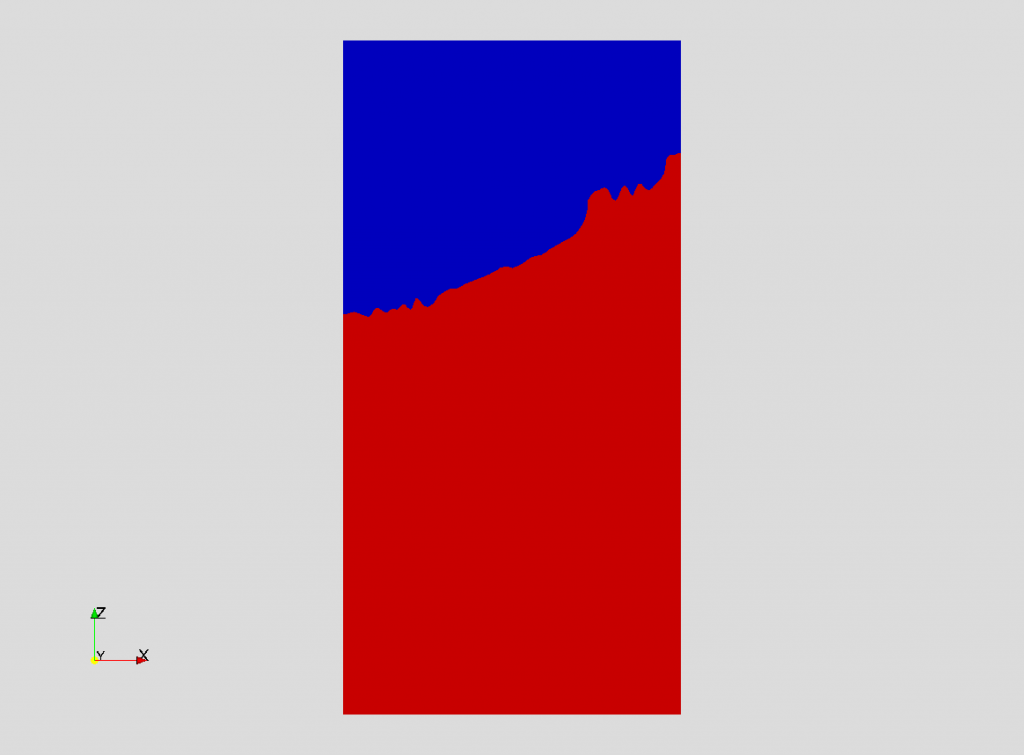
Figure 1. Liquid filling the cylindrical container (t1)
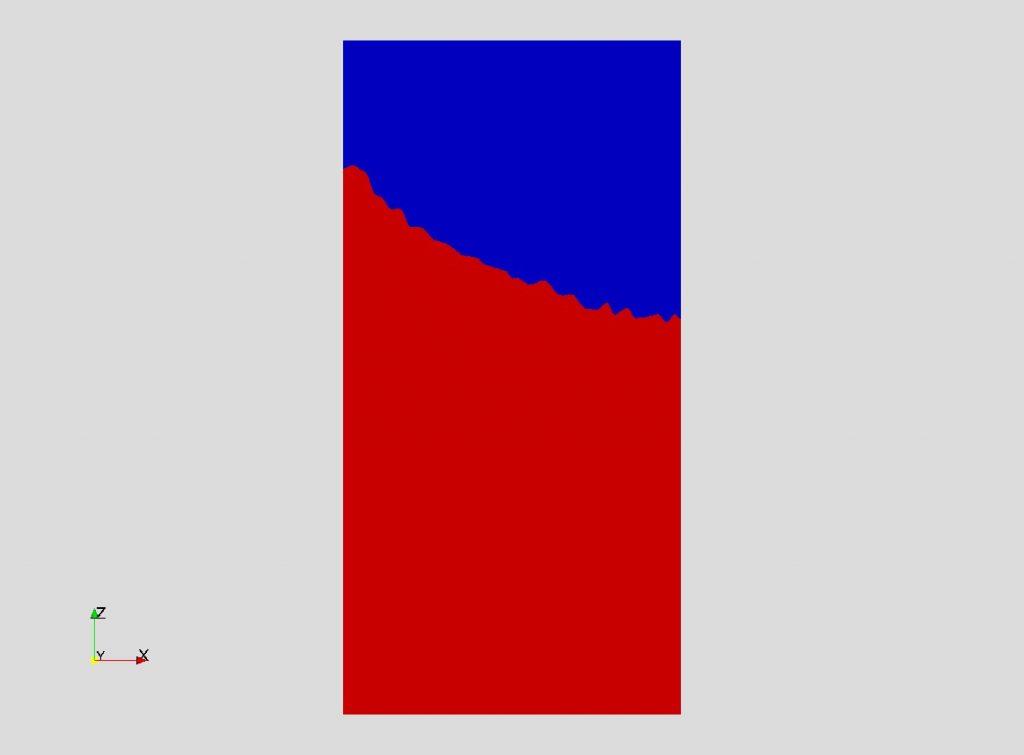
Figure 2. Liquid filling the cylindrical container (t2)

Figure 3. Liquid filling the cylindrical container (t3)
In Figure 4 we plot the value of the forces, induced by the movement of liquid, that excite the support structure of the container in transversal directions,
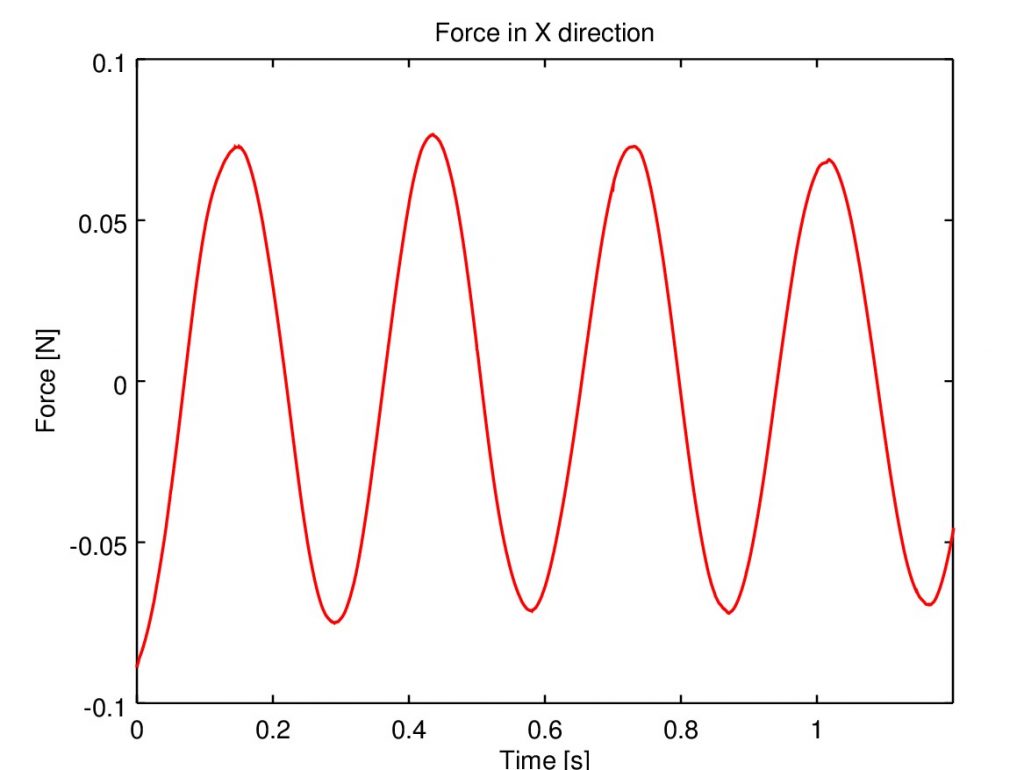
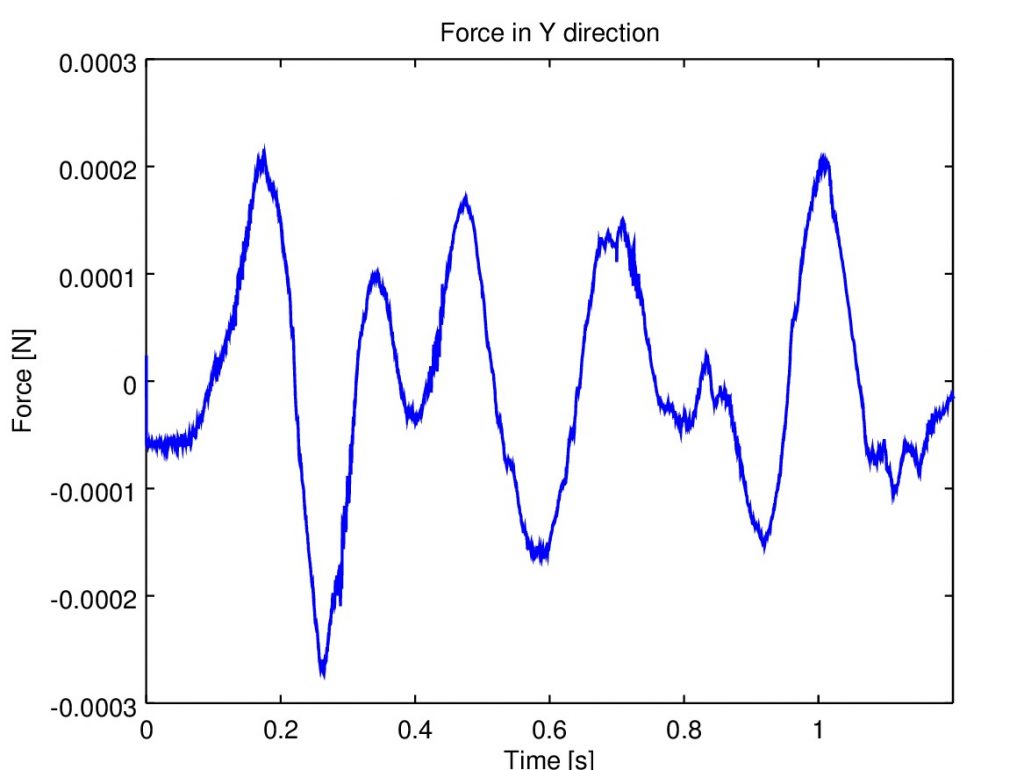
Figure 4. Transversal forces as a function of time
Finally, in Figure 5, we present the result of the FFT performed on the time series of the transversal forces, this frequency decomposition is required to determine the frequencies with which the movement of the fluid excites the support structure.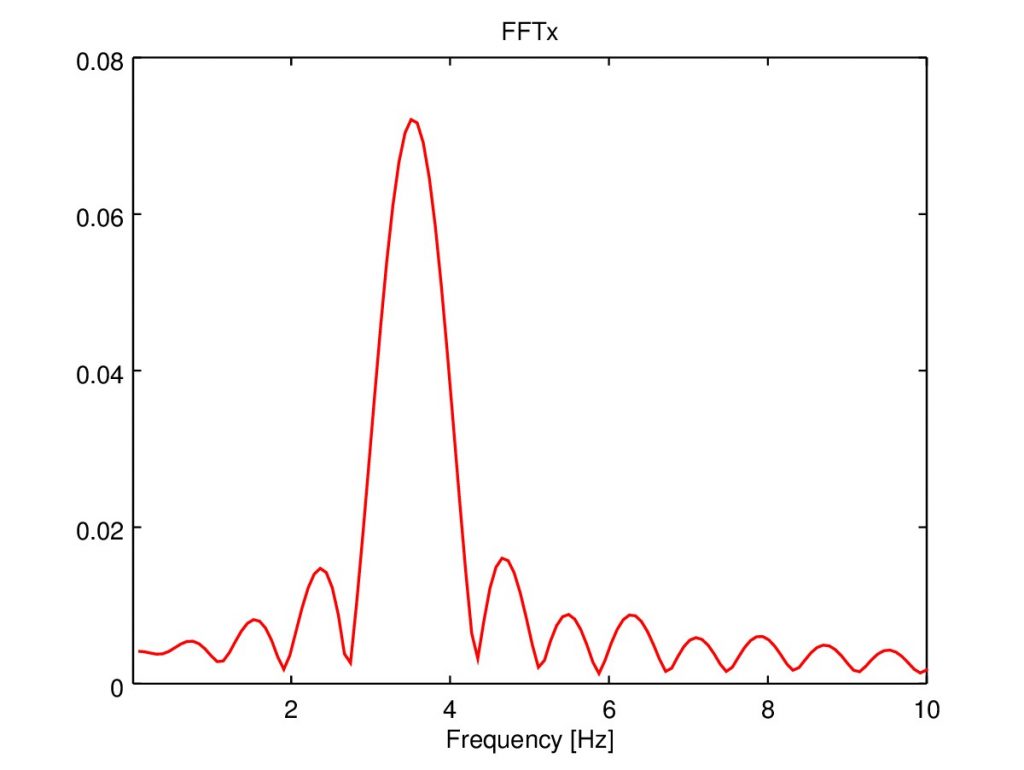
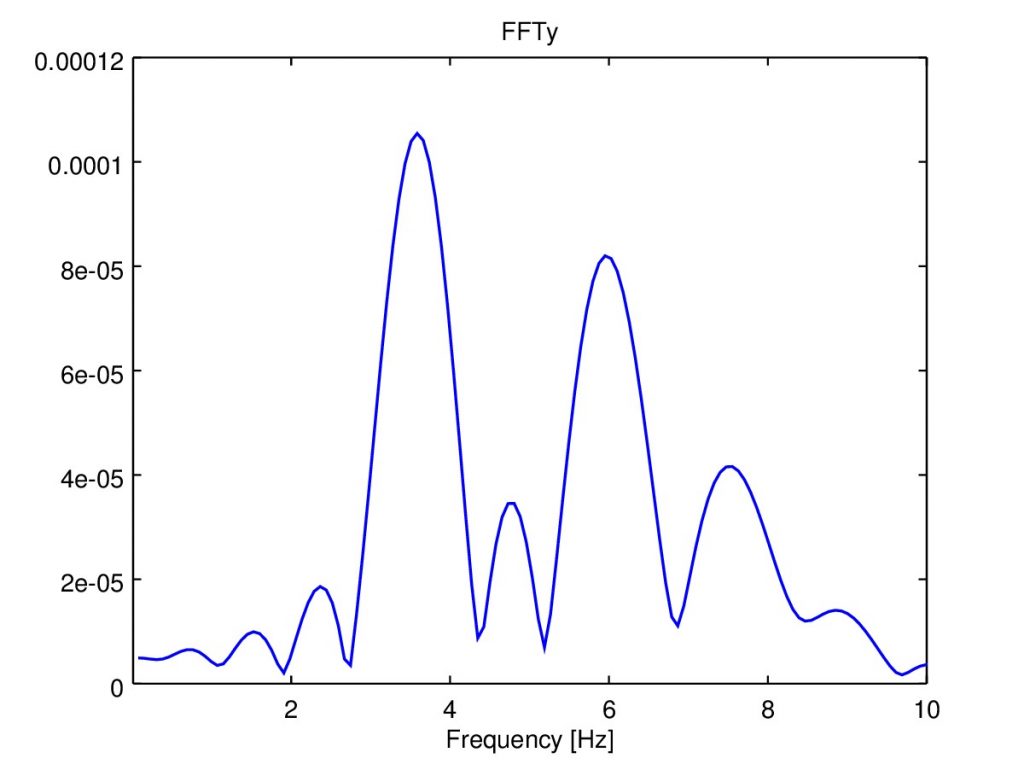
Figure 5. FFT of the transversal forces
